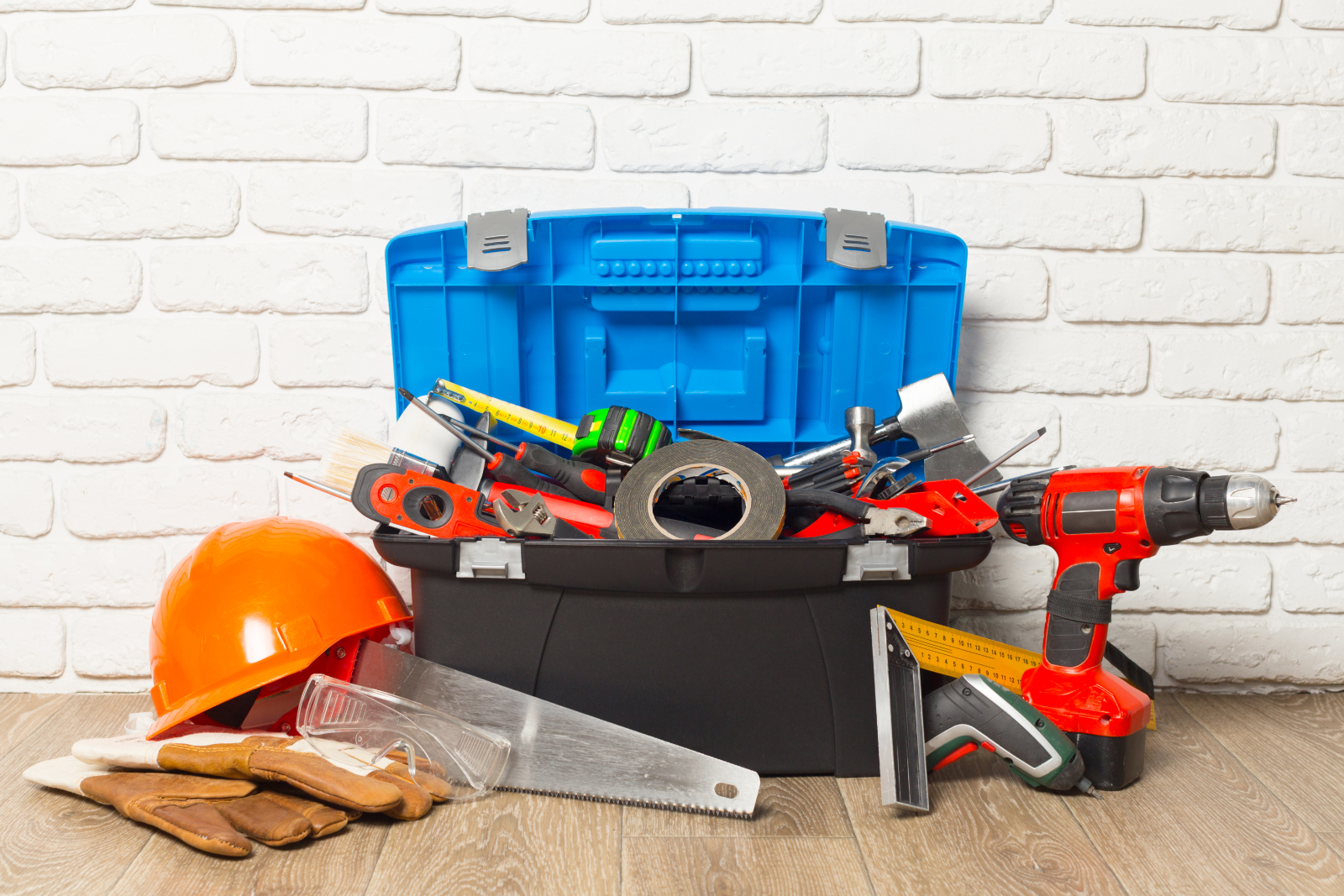
Tools and equipment are essential to the effective running of any construction site but, because they are used so much, they can suffer a lot of wear and tear, become damaged and eventually be unusable.
However, with proper care and maintenance, the lifespan of your tools and equipment can be extended and that’s good news for four reasons: 1) Better quality tools means better quality work; 2) It reduces costs related to repairs or replacements; 3) There will be fewer accidents/ injuries from faulty equipment; and 4) It’s better for the environment.
With so much to gain, in this week’s blog, we’re sharing some top tips for how to protect and maintain those tools.
Four handy tips
1. Use the correct tools for the job
Using the wrong tool for a job can lead to damage and reduced efficiency so the first thing to remember is to always make sure you have the right tool for the task in hand.
2. Store with care
When not in use, tools and equipment should be stored in a dry, clean, secure and well-organised place. Doing this helps to prevent damage from moisture or dirt, reduces the chance of theft, keeps the workspace looking professional and means you’ll easily be able to find what you need when you need it.
There are a range of options to choose from, including toolboxes, cabinets, storage containers, bags, drawers, pegboards, shelving etc. For enhanced protection, you could use anti-rust or corrosion liners in toolboxes and/ or add silica gel packs which capture any excess moisture. For power tools, the best tip is to store them in their original case or packaging as often this has been designed for optimum protection.
3. Keep them clean
After a day’s work, most tools and equipment will have accumulated some level of dirt/ grime. If this is left to build up, it can lead to rust and other forms of corrosion so cleaning your tools regularly is important for ensuring the items stay fit for purpose and extending their lifespan.
Always follow the manufacturer’s guidelines around cleaning and never use any harsh chemical solutions as they can be damaging.
For most hand tools, you can start by using a clean cloth or brush to remove any dirt or debris, then use a mild soap with water to clean them properly, followed by a clean-water rinse. Wipe them with a dry cloth and, where appropriate, you can apply a light coat of oil to protect the surface area (subject to the manufacturer’s guidance).
For power tools, it’s important to begin bydisconnecting them from the electricity supply. You can then use a vacuum or compressed air machine to get rid of dust, dirt and debris. Take some time to clean all parts of the tool and, if there is any rust to deal with, use a stiff cleaning brush but be careful to only apply light pressure so as not to cause scratching. You might also want to apply a corrosion protector and/or add lubrication where this is needed.
4. Regular inspection
Regularly inspect your tools for faults and signs of damage (e.g. cracks, chips and worn out parts). If there is damage, ensure this is repaired as soon as possible to prevent things from getting worse or becoming a safety hazard.
After use, a quick visual inspection should only take a few minutes. Here are some examples of what you might be looking for:
- Check cutting tools for bluntness or nicks and dents. Sharpen these whenever you spot damage but also routinely (minimum every six months).
- Look for any loose nuts or bolts and tighten these up immediately.
- Spot signs of rust or corrosion and remove this or replace the tool before you next use it.
- Inspect power tools for cracks and check the cords/ plugs are not damaged. To avoid them becoming a fire hazard, replace power cords as soon as any damage is found. As a preventative measure, you might cover electrical cords with industrial strength casings or purpose-built ramps.
Keeping your construction tools and equipment in good working condition is important to the success of any construction project – contributing to high quality standards, efficiency, cost-savings and health and safety. Extending their lifespan also has a knock-on positive effect on the environment because longer use reduces waste and the carbon footprint of a replacement (e.g. the use of raw materials and energy used in manufacturing and distributing those items).
Let us know if you have any other tips around the protection and maintenance of the tools/ equipment you use on site. Comment over on our Facebook or LinkedIn pages.
02.02.2023
Feature image: Freepik








